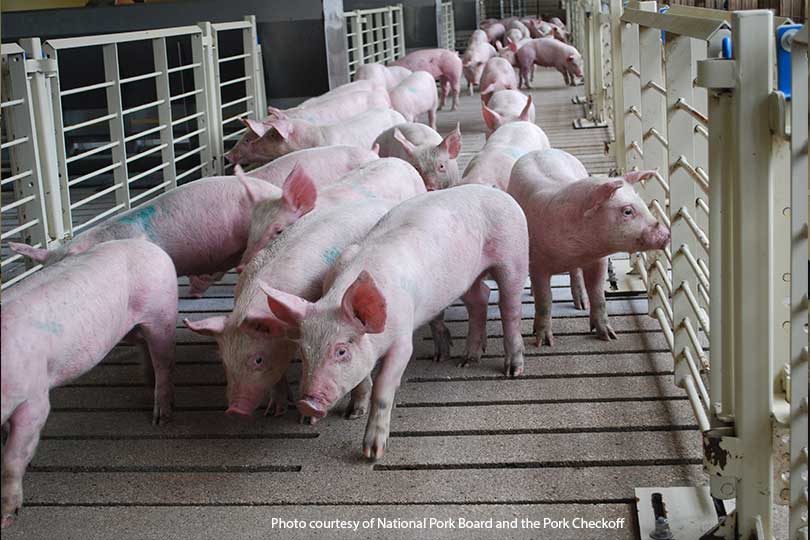By Justin Walker
Communications Specialist
The U.S. Department of Agriculture (USDA) is accepting comments on a proposed rule that would change the way it inspects swine slaughter facilities.
The proposed rule, according to USDA’s Food Safety and Inspection Service (FSIS), is an effort to modernize the inspection systems through science-based approaches to food safety.
The amendments would establish a voluntary inspection system, called the New Swine Slaughter Inspection System (NSIS), for facilities that harvest market hogs and requires further pathogen sampling for all swine slaughter locations.
According to the agency, the proposed rule would allow for innovation and flexibility within the facilities and for a more efficient and effective slaughtering process.
Establishments opting into NSIS would increase the number of offline USDA inspection tasks, while continuing FSIS carcass-by-carcass inspection. These tasks would place inspectors in production areas where critical tasks that have direct impact on food safety can be performed.
Acting Deputy Under Secretary for Food Safety Carmen Rottenberg praised the proposed inspection systems, stating the modernized practices would benefit the industry.
“FSIS is excited to continue modernizing inspection practices, while allowing opportunities for industry to innovate and streamline food production,” Rottenberg said. “There is no single technology or process to address the problem of foodborne illness, but when we focus our inspections on food safety-related tasks, we better protect American families.”
Regulations for all swine slaughter establishments would also be amended under the proposed rule. New requirements would make sure locations implement measures to control enteric pathogens that can cause foodborne illnesses. These locations would also be required to address their Hazard Analysis and Critical Control Point (HACCP) plans, Sanitation Standard Operating Procedures (Sanitation SOPs) or other prerequisite programs, applying appropriate measures for contamination prevention throughout the entire production process.
There will be a 60-day period for comment once the rule is published in the Federal Register.

